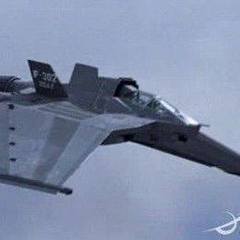
brwainer
Member-
Posts
3,303 -
Joined
-
Last visited
brwainer's Achievements
-
Why tf are server chassis so expensive
brwainer replied to SpaceFlier's topic in Servers, NAS, and Home Lab
Also consider that a Chassis like that typically includes the drive backplane and often the PSU(s) as well, which are low-volume specialized parts as far as these things go. If you look at the cost breakdown of a Backblaze pod you’ll see the backplanes cost as much or more than the bent metal, and they designed fairly simple ones that just need to do SATA, not full SAS. -
how prevalent is cisco networking gear in the real world
brwainer replied to JoshCanHearYou's topic in Networking
I’m working at a Fortune 500 company as a Lead Network Engineer. A few weeks ago, myself and three of my colleagues flew out to a new datacenter to rack and set up $2 million worth of Cisco and F5 equipment. Nexus 9K switches in spine and leaf topology, with Catalyst 9300L switches for the out of band management, and Catalyst 8500 routers. Each one we performed initial setup on purely from serial console. All programming of them done via CLI after they got online too. The VXLAN config will be done via Nexus Fabric Manager, but that’s it and we’d be comfortable doing it by hand if we hadn’t been given it for free. We’re connecting console servers to provide OOB serial access as well. If we had gone with Arista or Juniper for this deployment, the overall methods would have been the same - I haven’t seen a GUI yet that is good enough to completely replace the speed at which you can get precise information out of a CLI. GUIs are good when you are taking a larger overall view at something, or to enable templates and standardized workflows. Except for when they try to teach their automation tools, anything you learn about Cisco will be transferable to general networking principals and other vendors. I had a networking class in college that was just using a CCNA Study Guide as the course material, and at my first job after that I mainly touched Aruba/HP and then later Ruckus/Brocade switches, and the knowledge I gained follow the Cisco methods was still useful to me. At my second job, we used hardly any Cisco equipment. And even so, when talking to my manager about what I should study and certifications to try to get to further my career both with that company and in general, I was told to continue on the Cisco certification path. At my current employer, when I applied for my first position here, the role was for removing Cisco routers from over 1000 branch locations and replacing them with a non-Cisco SDWAN appliance. And yet the fact that I was CCNA certified was a deciding factor between me and another candidate. Try to recognize in your studies what is an industry standard, such as protocols and RFCs that everyone has to abide by, and what is Cisco’s way of implementing things. Sometimes the way Cisco does things becomes the standard that everyone follows, and sometimes they go off on their own, and its only the requirement of interoperability that keeps things minimally compatible. -
Entirely depends on what you’re doing. Large files that are sequentially written and read? Yeah a single drive is going to sustain >1Gbps all day (right around 2.5Gbps at the outside of the disk where the linear velocity is fastest, slowing down to the middle). More small files (<1MB), or things read non-sequentially, like programs or video editing? Not a chance without a large array or SSDs.
-
Static IPs or DHCP for home network "infra" (LAN-side)?
brwainer replied to dfederm's topic in Servers, NAS, and Home Lab
There is a middle ground of “DHCP Static” or “DHCP Reservations”. My method is this: anything that is essential for DHCP to run or to fix it gets a (true) static IP, everything else that would just be annoying if it changed gets a DHCP Static/Reservation. So for me, where I have DHCP being done by a VM and the router doing relay to it for the other VLANs, my static list is: - Router - main switch - Hypervisors - the VMs that do DHCP (HA pair) - desktop PC to be able to fix stuff Everything else is using DHCP and I just have reservations in the DHCP server. I find it simpler this way. -
Did you add that email to your contacts list? In Gmail anything from a contact skips the spam filters.
-
Pssst just making sure you’re aware of the BliKVM PCIe version - yes it costs money but $207USD (at this moment) is probably a lot cheaper than anything industrial/enterprise you found. It runs a fork of the PiKVM project software. You would use something like your smartphone instead of physical buttons, but you get the added benefit of being able to do this and also the KVM functionality away from home (if you set up a VPN to your home router) https://www.aliexpress.us/item/3256804386522898.html?gatewayAdapt=glo2usa4itemAdapt
-
Agree with above posters so far. But also, it may be a bad motherboard slot, or bad CPU socket, or bad CPU. Try swapping the two sticks’ position - put the “good” stick in the “bad” stick’s slot, and leave the “bad” stick out. See whether you have memory issues - if yes, then its probably not the memory stick. Validate by putting the “bad” stick in the “good” slot and taking the “good” stick out again. In other words, you’re looking to see whether the issues move with the memory stick, or are tied to the slot. If the issue is tied to the slot, the only advice I have is to remove the CPU, check for bent pins, then replace the CPU and make sure the heatsink isn’t over-torqued.
-
Persistent errors in zfs while no errors in smart test
brwainer replied to Nord1ing's topic in Servers, NAS, and Home Lab
Sounds like it. Could be a bad solder joint on the sata port, or damage to the PCB. -
ISP NOT LETTING ME HAVE OPTION TO ENABLE DISABLE WIFI/ WLAN
brwainer replied to kadxprime's topic in Networking
Harhar tin foil hat. but seriously if you actually want to “turn on and off” the wireless often and quickly, a shielded box that you can place over it is going to be effective. Faster to walk over and remove the box than to log into a page and change a setting. (Depending on the size of the house). Or as @Heats with Nvidia says, get your own router. You won’t get anywhere with most ISPs with the argument that other ISPs let customers do this because your ISP probably has no competition. Or else move to the competition.- 10 replies
-
- internet
- fibre optic
-
(and 4 more)
Tagged with:
-
Persistent errors in zfs while no errors in smart test
brwainer replied to Nord1ing's topic in Servers, NAS, and Home Lab
This “smells” like a SATA cable/backplane issue to me. -
Proxmox install using zfs with hot spare?
brwainer replied to ianm_ozzy's topic in Servers, NAS, and Home Lab
If you care about the data at all, you should have regular backups at all times. -
Proxmox install using zfs with hot spare?
brwainer replied to ianm_ozzy's topic in Servers, NAS, and Home Lab
You can have the drive be a hot spare at the ZFS level, but not at the bootloader level - there will always be command line work in setting up the replacement drive to be bootable. -
Proxmox install using zfs with hot spare?
brwainer replied to ianm_ozzy's topic in Servers, NAS, and Home Lab
They have 1 512GB SSD already and are thinking about buying 3 more.









.png)